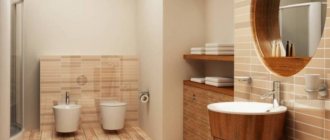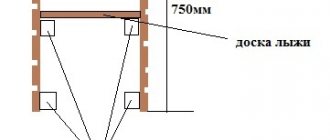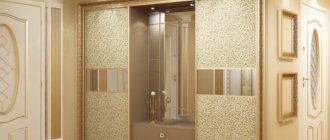Share
Tweet
+1
Pin
Placing equipment in the kitchen is not an easy task. Often at this stage a dilemma arises whether it is possible to place the oven next to the refrigerator. The space of the kitchen requires the arrangement of all necessary furniture and appliances in such a way as not to violate safety regulations.
Why is it undesirable to have a refrigerator and oven next to each other?
Equipment manufacturers do not recommend placing a refrigerator and an oven next to each other. Since both of these types of household equipment have different operating features. The heat generated by each of them during operation can adversely affect the system of a neighboring device, creating unnecessary load. Which can ultimately lead to wear and tear on the equipment’s mechanisms and its rapid breakdown.
The cooling system of modern refrigerators tends to give off heat, which is accompanied by heating of the back wall. If influenced from the outside, the power of the compressor will increase, causing overheating of the equipment. Accordingly, a small distance between the appliance and the oven leads to a decrease in service life.
It is important to know! When planning the purchase of these electrical appliances, you should pay attention to the accompanying instructions. As a rule, it indicates the minimum distance from each other recommended by the manufacturer, as well as other possible restrictions.
As a rule, the distance noted in the operating instructions is no less than 0.5 m. Any surface such as a table or kitchen cabinet can be used to separate devices. Failure to comply with these rules and close placement of electrical equipment is a reason for service centers to refuse to provide free repairs within the warranty period. Owners of small kitchens are forced to use resourcefulness and use built-in appliances as elements to isolate the refrigerator from the oven.
At what distance from the stove should the refrigerator be installed?
Now let's talk about what distance can be considered normal when placing the refrigerator close to the stove. Clear recommendations are almost never given in the technical data sheet, so you will have to act literally “by eye”.
Is it possible to place a refrigerator next to the stove at a distance of 15 cm? The answer is yes, it is possible only if there are small burners on the half of the stove close to the household appliance. Since the heat from them goes mainly upward, their influence on the operation of the compressor will be minimal.
The optimal distance can also be determined “by touch”: you need to turn on the burners on the stove and check with your hand whether the heat from them reaches the place where the refrigerator is supposed to be installed.
If the design of the stove is such that the burners on both sides are large, and it is not possible to swap them, then we provide a distance of at least 30 cm. For reliability, you can protect the refrigerator with a layer of thermal insulation - for example, construct a light plasterboard wall between the appliance and the stove. Even such a screen must be installed at a certain distance from the refrigerator - a gap of 1-2 cm for ventilation.
Even if the included instructions do not indicate whether and at what distance the refrigerator can be placed next to the stove, it can’t hurt to be extra careful. A gap of 15-30 centimeters is not so large, but it will save you from many problems with the operation of the refrigerator in the future.
Placement of built-in devices
The answer to the question about placing a refrigerator and oven next door will be positive if one of these appliances is built-in. Thus, modern built-in ovens are endowed with special heat-protective properties and are additionally equipped with a heat-insulating layer. Which creates a barrier to the spread of heat in the external environment. The same applies to built-in refrigerators that have additional thermal insulation in their external elements. This will also allow you to place the device in close proximity to the oven. But what can be used to create insulation if the placement of these two electrical appliances is unavoidable?
It is necessary to create a distance of at least 15 cm. The following tips will be useful in solving this problem:
- A shelf or cabinet will create the necessary gap between appliances and add additional functionality to the kitchen interior.
- A furniture partition in the form of which you can use a frame for installing household appliances, made of wood. This will protect the devices from unwanted thermal effects.
- Insulating the wall of the refrigerator that is closest to the oven will reduce the risk of excessive heat. To do this, you will need heat-reflecting foil.
Modern household appliances can be installed nearby, but it is worth considering the operating requirements and following safety rules. Based on simple recommendations, placing an oven and refrigerator in the kitchen will not be difficult.
Next to the stove: yes or no?
“Hot” appliances, the stove and the radiator, pose the greatest danger to the refrigerator, which performs functions exclusively at room temperature. The stove heats up during cooking, and heat is also constantly supplied from the radiator. The wall of the refrigerator, accordingly, experiences this effect.
To keep the temperature inside the chambers of the device within the specified range, the compressor operates in enhanced mode. And this will happen constantly when the stove is turned on. The service life of the compressor will be significantly reduced, and the motor of the device may also suffer. And repairing household appliances is not a cheap pleasure. Replacing the compressor relay will cost 1,100 rubles. So think for yourself. And decide, is it worth it?
Sometimes, however, circumstances develop in such a way that there is nothing special to decide - and there is no choice where to put it.
If in your kitchen the refrigerator and stove are located next to each other, remember a few important points:
- Repairs under warranty may be refused.
- The amount of payment for electricity will increase.
- Use additional thermal insulation or leave at least a small passage for air circulation. Ideally, this distance is 50 centimeters.
Modern models of household kitchen appliances already have improved thermal insulation as standard. Their cost is only an order of magnitude more expensive.
The oven is just as dangerous and a “hot appliance”. It is recommended to install it next to the refrigerator only with a combination of two components:
- It's built-in.
- Warm air comes out from the front side, and not along the back wall, which will become common to them.
An example of the correct arrangement of household appliances
Ideas for optimal refrigerator placement
It is still possible to place two kitchen appliances close together. To do this, a screen is placed between them. The partition is selected so that it has thermal insulation properties and is easy to clean.
The simplest version of a protective screen. Chipboard has relatively low thermal conductivity, and laminated wood is also easy to keep clean.
The main task will be to select or cut a sheet of given sizes. To prevent staining of the board material, it is better to decorate the side edge with hot-melt adhesive decorative tape.
These are sold in hardware stores. In order not to spoil the interior, it is better to choose a sheet finish that is harmonious in color and texture.
A more advanced type is thermal protection. Ceramics are easy to clean, and when glued to chipboard, OSB or drywall, they provide additional protection from temperature.
Another plus: the tiles look organic in the kitchen and are easier to match to the decor. After sticking to the sheet, it is extremely important to carefully seal the joints between the individual plates, otherwise moisture will penetrate between them, slowly destroying the base.
A luxurious, one might say royal way to protect the refrigerator from heating by a stove is to install a screen with a mirror. It will best cope with the task of a heat-insulating layer, simply reflecting all the heat back. An excessively glare surface can be additionally covered with frosted or corrugated glass.
Be sure to read:
We invite you to familiarize yourself with the Cornice: how to choose curtains
Which refrigerator is better: No Frost or drip, pros and cons
There is a less effective, but much more inexpensive option - using foil instead of a mirror as insulation from thermal effects. The only serious drawback of this method is the low aesthetics of the resulting surface. However, if you use decorative glass here too, placing it in front of the foil, this drawback is leveled out.
A gas stove and a refrigerator are two completely different units. One is designed for cooling and freezing food, the other is for heating and cooking it. If you place them side by side, then the cold when opening one will collide with the heat and warmth from the other.
The refrigerator will suffer first of all, since the side that is closest to the stove is doomed to yellow over time, the handles will crack, and rubber seals may also become unusable due to temperature changes, ceasing to perform their main functions. The higher the temperature near the refrigerator, the faster the compressor starts working, thereby increasing the likelihood of its rapid wear. In addition, there is an increased consumption of electricity.
A pull-out shelf, a small cabinet, or any other attribute of kitchen furniture that can fulfill its mission of storing utensils or serve as an additional work surface for cooking can act as a barrier between them.
One has only to imagine the juxtaposition of these two foundations of any kitchen and a picture immediately appears before one’s eyes: the handles of frying pans or pots rest against the wall of the refrigerator, food splashes form yellow spots on the surface. Few people might like this situation, and it will add more hassle with cleaning. Conclusion - you definitely need a gap, and preferably at least 50 centimeters, so that it can be used for improvised objects.
Of course, if we are talking about a very tiny kitchen, where all ideas are limited to square meters, this arrangement option is extremely undesirable. Here, between the gas stove and the refrigerator, you can put protective insulation (screen) in the form of tempered glass or the same asbestos insert at least 50 centimeters above the level of the gas appliance.
If the kitchen is small, then the refrigerator can be installed outside it, for example, placed on a loggia or in a pantry. Some apartment owners place such large equipment in the hallway.
In Khrushchev-era apartments, not only the kitchens, but also other rooms are small. The option of installing a refrigerator in the hallway is eliminated. But in such apartments the interior walls are not load-bearing. If desired, you can choose a suitable refrigerator and build a niche for it in the partition between the living room and kitchen.
The ledge in the living room is decorated or used as a shelf. It is also convenient to place a washing machine in the free space.
When choosing a place for a refrigerator, do not forget that the device cannot be installed not only near the stove, but also near radiators, as well as other heating devices.
An example of the correct arrangement of household appliances. Even in a small kitchen, you can install appliances so that they do not interfere with each other
If it is impossible to move household appliances to another room, then you need to take care of a good hood in the kitchen. It must be powerful enough to capture as much convective currents from the gas stove as possible.
A good option for a small kitchen is a built-in refrigerator. The surfaces of such a device are covered with chipboard or MDF boards. The frame of the box will not only protect the unit from heat, but will also insulate the metal walls from dirt and grease splashes. To improve the thermal insulation properties, foil or other insulation can be glued to the surface on the side of the gas stove.
A powerful hood and proper placement of appliances will not only extend the life of household appliances, but will also optimally complement the design of even a small kitchen
If there is very little space in the kitchen and it is not possible to redesign the room, then you can install a mini-fridge. It is lower than standard models, so you can install an oven or microwave on top. The main thing is not to forget about the rules of thermal insulation of devices
Replacing full-size equipment with smaller versions will help you gain some free space. For example, you can install a stove with two burners. This will increase the distance between the stove and the refrigerator to 15-20 centimeters.
There are also narrow refrigerators on sale, their width is about 55 centimeters. Of course, this is an expensive solution to the problem.
Sometimes it is better to make a small remodel in the kitchen, install a smaller sink or move the stove to another place. Even a few centimeters of free space will improve the situation.
Why is it not recommended to place the oven next to the refrigerator?
The main reason why these two devices should not stand next to each other is that both of these units emit a large amount of thermal energy, and this, as a rule, leads to premature wear of parts.
It is not recommended to place the oven close to the refrigerator; both emit a lot of thermal energy, which can lead to overheating and malfunction
My secret
Before assembling kitchen furniture and purchasing appliances, decide in advance on the location of the sink and mixer, as well as water purification devices. The correct location of the kitchen space will help in the future to avoid various inconveniences and unforeseen complications.
The kitchen is divided into several zones:
- water zone
- hot zone
The first zone includes the washing area, the location of the washing machine and dishwasher. It is necessary to place all these elements closer to each other and take care of their connection to water and sewerage. These large household appliances quickly break down, and the drain hose easily becomes clogged precisely when it is installed far from the drain. Lengthening the hose forces the pump to constantly work under pressure. It’s better to decide on the washing area before renovating your kitchen or apartment, especially if you don’t like the original layout of the premises. At this stage of renovation, the company Repair City can become an indispensable assistant, which not only carries out redevelopment of apartments, but also carries out complex repairs and decoration in a house of any complexity. By the way, by ordering an apartment renovation, you can receive a design project for free.
The program interface consists of four windows that can be edited as desired. The first window shows components containing individual pieces of equipment that can be placed in the room. The second window is where you'll find a list of everything you've installed, the third window is a simple floor plan of the room, and the fourth is a 3D view of the result. The basis is insertion and deployment of the device. You can choose from a wide variety of furniture, decorations and other things.
To ensure that your creation is subject to serious criticism, the program offers two different 3D views. The first is the eye of the spirit, floating above the entire room, where zooming and other movements are commonplace. A second opinion is called a virtual visit, with which you can look at the apartment through the eyes of a visitor. The big advantage of the program is its location in the Czech Republic and the fact that it is absolutely free.
The hot zone includes a cooking surface: stove, oven, microwave, as well as other equipment associated with the thermal process. It is known that built-in kitchen appliances are more convenient to use, but there is no need to build into furniture something that is not intended for this purpose. For example, according to their technical characteristics, microwave ovens are installed in an open space to allow air to flow freely from all sides. Remember that any household appliance that is not designed for installation loses its performance and quickly breaks down.
A room arranger can be described as a program designed to design rooms, rooms, apartments or entire houses. This is a program with very simple and user-friendly controls that, after a moment of testing, can be solved by a complete beginner. All this is made easier by the fact that the program is entirely in Czech. In your design, you can decorate furniture, change floor colors, carefully measure everything, and much more. The resulting work can be viewed in three dimensions.
The Room Arranger also contains many more pieces of furniture that can be expanded, changed in size, orientation, etc. Again, a program for creating a virtual apartment, furniture layout, color selection and much more. On the other hand, a more controlling and more demanding user interface.
Installing a microwave oven under the countertop will force you to constantly bend down, and in wall-mounted sections, excessive height will cause you a lot of trouble: above your eye level, a heated bowl of soup that you need to reach will become unsafe.
It is much easier to understand light household appliances: install a mixer, steamer, blender, bread maker on the kitchen countertop. The consistent location and sequence depends on how often you use them while cooking.
Basic rules for placing appliances in the kitchen
There are also several important nuances regarding the distance between the equipment and each other. For example, it is not recommended to place any equipment near a gas stove. The stove should be located far from the window to prevent the curtain from being blown away by the wind, based on fire safety measures. The gas stove should be placed closer to the gas pipes with easy access to the gas shut-off valve. The pencil case or refrigerator should be at least 15 cm from the hob, and the sink should be far from it, since in the immediate vicinity of these elements there is a risk of burns when washing dishes from a boiling pan located nearby. The stove or hob is installed away from the passage: you may accidentally touch a hot frying pan or pan.
The hood should be located at a distance of 70-75 cm from the electric hob, and from the gas hob - 75-80 cm. Proper placement of the hood makes the operation of the equipment much more efficient. Do not place the stove near a corner cabinet, as this will prevent you from opening the oven. Remember that any piece of kitchen equipment has its own “opening zone”.
The refrigerator is installed at a great distance from heating appliances, ovens, water heaters and gas stoves. It should also not fit tightly to the wall; leave the optimal distance of 5-10cm.
The TV in the kitchen is installed as far as possible from the stove, sink, or oven: such equipment will quickly deteriorate from fat, heat and moisture.
To connect household appliances, do not use extension cords or various cords, as due to the considerable power of household appliances, there is a danger of fire or short circuits. Most fires occur precisely because of technical illiteracy and neglect of basic safety rules, as well as non-compliance with the attached instructions. For example, there is a known case where an electric kettle caught fire because wine was boiled in it, despite the fact that the instructions clearly indicated this point of operation of the device.
Gas stoves or built-in gas panels today can be connected with nice flexible gas hoses in a metal braid, which come in different lengths, prices and several types. This design has a white ring insulator that is located between the metal braid of the hose and the connecting nuts. It is necessary to choose the option that provides electrical insulation of the gas pipe from the metal braid.
Ukha
is the center of attraction for the whole family.
Here they create culinary masterpieces using signature recipes, prepare quick breakfasts, discuss grandiose plans for the future over dinner and carefree chat over a cup of coffee. Therefore, a modern kitchen should not only be cozy, but also comfortable and functional. And we are not talking about ergonomic furniture or practical design, but about the correct arrangement of equipment. Options for arranging kitchen furniture and appliances, first of all, depend on the layout of the room, but there is a universal rule that works for any, even small kitchen - the “rule of the triangle”
. The bottom line is that three key points are taken as a basis - the sink, stove and refrigerator, which will be the vertices of the triangle. Accordingly, the larger the kitchen area, the longer the side of the triangle can be, along which the housewife will move - as a rule, these are segments from 1 to 2.5 m.
Photo: decor8 holly
The most common planning methods
To understand exactly how the equipment should be located, let’s first figure out what options for arranging kitchens are available to those who started it.
Linear kitchen
The arrangement of furniture and household appliances along one line is ideal and elongated. To conveniently organize a small space, the storage, cutting and cooking areas must be located next to each other. The refrigerator and sink can be placed on the left (ideally, if there is still a small working space between them), and the stove will be on the right. The work area will be the center of the area, but you won’t have to constantly rush around the kitchen with food, because the arrangement corresponds to the algorithm: took out the product - washed it - cut it - cooked it. If square meters allow, then you can arrange the kitchen linearly on two opposite walls, and place a dining table between them.
Photo: simplyswede
L-shaped kitchen
This option is suitable for almost any room, excluding elongated kitchens, and is ideal from the point of view of creating a “triangle”. Corner kitchens are convenient because, regardless of the area, the work area and the dining area are somehow separated from each other. The table takes up the remaining free space, while the processes of cooking and eating food in the space do not intersect.
Photo: decor8 holly
U-shaped kitchen
The arrangement of furniture and household appliances along three walls of the kitchen is appropriate only in a large area. There should be plenty of space between the parallel sides to avoid the feeling of being cramped. One of the planes is often mounted under the window, the lower tier is placed in the shape of the letter “P”, and the upper one is better placed only on one wall - there will be more than enough space for storing kitchen utensils. You can give the kitchen the shape of the letter “G” by adding a fourth plane - a small bar counter adjacent to one of the sides, if.
Photo: Favaro JR. Favaro Junior
Kitchen with island
Only those with large premises can afford to “build” an island in the kitchen - the area must be at least 20 square meters. Otherwise, cooking and moving around will be difficult. As a rule, the main working area is located on the island - a hob and a place for cutting food. Storage spaces, in turn, are placed along two walls at an angle or along three walls of the kitchen.
Photo: U6 Studio
According to the rules
Now that the footage and shape of the room have been taken into account, you can begin arranging the equipment, for which there are a number of rules and which must be taken into account.
What space in the room can it take? Where should the microwave be placed? How to place a dishwasher and washing machine in the kitchen? If you conditionally divide the kitchen into hot and cold zones, then answering all these questions will become a little easier. To the cold zone
or the water zone includes a washing machine (if it is not in the bathroom), a sink and a dishwasher.
The hot zone
is, as you might guess, a stove, microwave, oven and any other equipment that is associated with thermal processes - toasters, roasters and other steamers.
- The angular placement of the slab is not very convenient from the point of view. Imagine how long it will take to wash the work surface and one wall, say, from oil splashes if the stove is installed in the center. Now imagine how difficult it will be to clean two walls if the stove is located in the corner. Cleaning horizontal surfaces is always easier than cleaning vertical ones.
- install it so that it can freely pass air from all sides, that is, in an open space. You should not place the microwave on the lower level - you will have to bend over all the time. Placing it in hanging shelves can be downright unsafe - a heated plate that needs to be pulled out will end up at face level.
Photo: countrykitty
- Placing the stove next to the sink is a very bad idea; the minimum distance between them should be 45 cm. Even in the smallest kitchens, designers advise leaving a gap that can be used, say, for a small pull-out cabinet like a cargo net. Otherwise, drops of water may accidentally extinguish the fire, or the housewife washing the dishes will get burned.
Photo:
homestilo
- If the kitchen is very small and it is impossible to separate the sink from the stove (this may be the only excuse), at least do not squeeze the sink between the stove and the wall - a more inconvenient arrangement is difficult to imagine. Just imagine: washed dishes (especially if there is no possibility to place a dryer nearby) and food will have to be “transferred” through the stove to the work surface, constantly leaving drops of water on the floor.
- Place the stove away from the window - any fireman will tell you this: the wind can blow out the fire, and a curtain blown by a draft can reach the burner.
- The refrigerator should be moved away from the stove at a distance of at least 15 cm, otherwise its service life will be noticeably reduced.
Photo: simplyswede
- The stove should not be placed near the passage, so as not to accidentally touch a pan blazing with heat when moving from one room to another.
- When thinking about the location, keep in mind that the most optimal place for it is next to the sink, since, firstly, there are all the communications necessary for its operation, and secondly, it is more convenient to load dirty dishes directly from the sink.
- should be located at a distance of 70-75 cm from an electric hob, and from a gas hob - 75-80 cm. Its correct placement allows the equipment to work more efficiently.
- The dishwasher cannot be placed very close to the stove for obvious reasons, and it also has no place in the outer cabinets, since for normal operation the machine must be securely fastened on both sides.
- If cooking is unthinkable without the traditional viewing of “Fashionable Sentence”, install the TV away from heat and moisture - this way the equipment will last longer and Vasiliev’s reputation will not be tarnished.
Ekaterina Aganina
Ways to protect your refrigerator
When it is not possible to leave the recommended gap between the devices, you need to make your own partition from a material with insulating properties. Both organic and inorganic materials can be used as thermal insulation separating the refrigerator from the gas stove.
We suggest you read: How to transport a refrigerator correctly?
Organic options: reeds, cork sheets, textolite, chipboard. These materials are moisture resistant and can be used as insulation. But it is worth remembering that with prolonged heating they can become deformed.
Inorganic heat insulators:
- fiberglass;
- asbestos cardboard;
- isolon;
- mineral wool;
- drywall.
The materials have high heat-insulating properties. The only thing is that they can lose their quality when exposed to moisture, so they are not installed next to the sink.
Thermal insulation materials are sold in the form of rolls or small sheets with a thickness of 5 millimeters or more and a width of 75 centimeters.
The insulation is easily cut into strips; before gluing, it must be leveled. On one side, the rolled thermal insulation has a self-adhesive surface, and on the other, it is covered with a lavsan film. The material should be glued from top to bottom onto the entire surface of the refrigerator wall.
There is no self-adhesive layer on sheet insulation. It is recommended to use double-sided tape to secure it. It holds sheets well and can be easily removed when it is necessary to replace the material.
If it is impossible to place the equipment at the correct distance, then they think about insulation, which will protect the refrigerator from the harmful effects of the heating plate. The protective materials from which the partition is made are divided into 2 groups:
- Organic. These are: polystyrene foam, chipboard, cork, textolite. The listed materials have low hygroscopicity and are non-toxic. But not everyone will like their cost, and they also lose their shape due to thermal influences.
- Inorganic. Such materials include plasterboard, fiberglass, asbestos cardboard, and mineral fiber. They are resistant to high temperatures, non-flammable and have an attractive price. But effective protection of the refrigerator by them is possible only if the air humidity in the room does not exceed 50%.
The insulation sheet should be laid between the walls of adjacent devices. It will be able to protect the refrigerator from overheating and extend the life of key parts, but will not save you from greasy drops. Every time after cooking, you need to clean the walls of the cooling device. And some use a foil screen located in a metal frame for protection. It is secured with magnets or hooks.
If you have to isolate equipment, then it is more advisable to cover the wall of the refrigerator with a sheet of material that will fence off objects. And if you install it on the wall of a gas or electric stove, then it will not be able to fix on the heating surface and will soon fall off.
When it comes to insulation, it is important to think about aesthetic aspects. This is especially necessary when using organic materials such as chipboard. Without cladding they look unattractive. The design is spoiled by large inclusions of chips and a rough structure. It is recommended to cover the end of such a sheet with a decorative film, laminate it or hide it with a suitable profile.
Do not attach insulating material with liquid nails or glue. We need to think about the future. If you have to rearrange the equipment, the walls of the unit will become clearly visible. It is practical to use double-sided tape attached to the side of the refrigerator. Its adhesive layer will securely fix the insulating sheet and can be easily removed if necessary.











